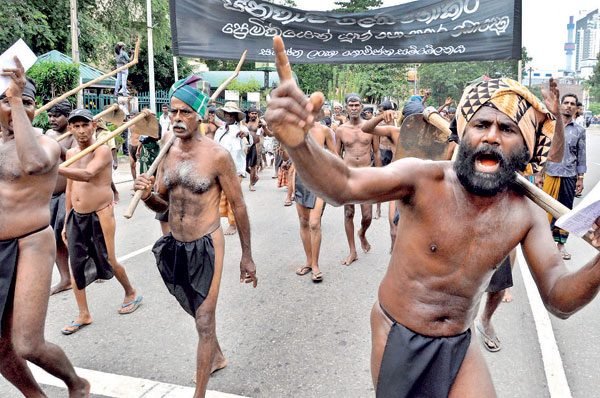The recent request by a group of Muslim women to modify nursing uniforms for religious reasons and the government’s hasty assurance that “there are no legal restrictions” reveals a deeper problem: a shared lack of Cultural Intelligence (CQ) on both sides of the conversation. Cultural Intelligence is not about appeasement. It is about recognizing context, respecting native frameworks, and understanding when adaptation becomes distortion. In this case, both the petitioners and the officials failed to uphold the civic and professional integrity of Sri Lanka’s public health system.
Let us be clear: the nursing uniform is not a casual garment. It is a symbol of discipline, hygiene, and public trust—rooted in the legacy of Florence Nightingale, who formalized nursing as a profession during the Crimean War. Her uniform was designed to reflect neutrality, cleanliness, and service not religious identity or political affiliation. To alter this standard based on personal belief is not cultural inclusion it is professional fragmentation. The history of the nursing uniform evolved from the formal, long-sleeved dresses and caps established by Nightingale in the mid-19th century, designed for professionalism and hygiene, to more practical attire during the World Wars, and eventually to the modern scrubs adopted globally in the late 20th century. These changes were driven by functionality, safety, and civic clarity not religious customization. The uniform’s purpose is to protect patients, identify nurses, and uphold public trust. It is not a platform for ideological expression.
Sri Lanka is a Sinhala Buddhist nation, with a Constitution that protects the Buddha Sasana and upholds civic coherence. Article 14(1)(e) of the Constitution guarantees every citizen the freedom to adopt, practice, and teach any religion. But this freedom must operate under the guardianship of native cultural integrity not as a tool to override it. Temporary residents and expatriates who enjoy privileges under this article must also respect the cultural foundation of the nation that hosts them. It must be acknowledged that government services including healthcare are funded primarily by taxes paid by the Sinhala Buddhist majority. These funds are now being used to accommodate segmented religious demands, while native Buddhist institutions and leadership receive minimal support or recognition. This imbalance is not just fiscal—it is cultural. It reflects a deeper erosion of civic priorities, where those who do not contribute to the system demand more from it, and those who uphold it are sidelined.
Many expatriates who become temporary residents in Sri Lanka operate under a liyapādīchi purwasi bhāwaya a paper-based civic identity that grants them access to constitutional privileges, including religious freedom. But this is not paramparika purwasi bhāwaya the rooted, traditional civic consciousness of native Sri Lankans. Without contributing to the cultural, fiscal, or doctrinal foundations of the nation, these residents enjoy rights without responsibility. This imbalance must be addressed not by exclusion, but by demanding Cultural Intelligence and civic respect from all who benefit from Sri Lanka’s hospitality.

Now ask this: What if Sinhala Buddhist nurses request to wear attire based on their own cultural or personal preferences? What if one demands to wear a traditional Redda Hatte, another prefers Udarata Adum, another chooses Pahatha Rata Adum, and another insists on Lama Saree as a symbol of heritage? What if someone, influenced by distorted Western media, demands to wear bikini-style attire under the guise of personal freedom? Would the government still say “there is no legal barrier”? Let us extend the logic further: What if Sinhala Buddhist male nurses request to wear the traditional amude the lion cloth as a symbol of heritage and simplicity? What if they argue that it reflects ancient Sri Lankan values and should be honored under Article 14(1)(e)? Would the government permit it in a hospital setting? Would it be considered professional, hygienic, or appropriate?
This is the danger of politicizing uniforms. Once the standard is broken, there is no limit to fragmentation. Public service attire must reflect national unity, professional dignity, and civic clarity not personal ideology or imported trends. Let us also ask a civic question: If Sinhala Buddhist nurses working abroad—whether in Muslim-majority nations or Western hospitals requested to wear Lama Saree, Udarata Adum, or newly designed Sinhala Buddhist attire as part of their cultural identity, would those governments allow it? Would they say “there is no legal barrier”? Would they redesign their national nursing standards to accommodate our heritage? The answer is clear: no nation rewrites its professional codes to suit foreign cultural preferences. Yet in Sri Lanka, we are expected to bend our standards, dilute our symbols, and politicize our uniforms all in the name of inclusion. This is not equality. It is cultural surrender.
And while the government claims “there is no restriction,” we must ask: Why are certain religious leaders especially maulvis cloaking this issue in soft language while organizing behind the scenes to legalize segmented attire through collective pressure? This is not a spontaneous request. It is a strategic maneuver to normalize ideological dress codes in civic institutions, using constitutional ambiguity as a tool. Reports indicate that the Ulama Sanvidhanaya and up to 30 other religious councils and advocacy groups are involved in this push not just to accommodate attire, but to institutionalize religious segmentation within national services. The goal is not coexistence it is gradual replacement of national standards with religious identity politics. This is not civic progress. It is cultural destabilization. And if the government yields to these demands in nursing, it will not stop there. Once segmented religious attire is normalized in one public service, it sets a precedent for others including the military, police, and civil administration. Uniformed sectors rely on discipline, unity, and visual coherence. If religious modifications are permitted in nursing, Muslim, Christian, or other ideological groups may demand the same in the Sri Lanka Army, Navy, Air Force, and Police. This would fracture chain-of-command visibility, compromise operational neutrality, and weaken national cohesion. What begins as a “harmless” accommodation in healthcare could become a nationwide unraveling of uniform standards. The uniform is not just fabric it is a symbol of civic unity, discipline, and national identity. Once politicized, it cannot be easily restored.
While Sri Lanka faces pressure to accommodate segmented religious attire in nursing, many other countries have already grappled with this issue and the outcomes reveal serious risks to professionalism, hygiene, and civic unity. France enforces strict secularism (laïcité) in public institutions. Headscarves and religious symbols are banned in healthcare settings to preserve neutrality. Courts uphold that professional standards override personal belief in public service. Belgium follows similar policies, and the European Court of Human Rights affirms that institutional neutrality is lawful, even if it limits religious expression. In Malaysia, Islamic groups pressured for long-sleeved uniforms and headscarves, but medical experts raised concerns about hygiene, heat stress, and procedural interference. Modified attire is allowed only under strict conditions. In the United Kingdom, the NHS allows religious attire but requires bare below the elbows for hygiene. Infection control policies override religious dress codes when necessary. Even in Saudi Arabia, where Islamic dress codes are enforced, nurses must meet hygiene and procedural standards. Long dresses and veils are permitted only if they do not interfere with medical duties.
Long dresses and religious modifications can be problematic. They pose hygiene risks, as flowing garments can carry pathogens and violate sterile zones. They create mobility issues, obstructing movement during emergency procedures. They compromise patient safety, as uniforms must allow quick identification and access to tools. And they undermine professional clarity, as uniforms must reflect civic neutrality—not religious segmentation.
Sri Lanka must learn from global precedent. Professional uniforms are not religious battlegrounds—they are civic tools of trust, hygiene, and unity. If we abandon Florence Nightingale’s legacy to entertain ideological demands, we do not modernize we dismantle the very foundation of public service.
“The nursing uniform was born from discipline, hygiene, and public trust not religious bargaining or cultural confusion. When a government abandons this legacy to entertain segmented demands, it does not modernize—it humiliates the profession. Sri Lanka must protect the dignity of its nursing hood, not dress it in ideological surrender.”
By Palitha Ariyarathna

